How sustainably managed seas help an Indigenous community keep a thousand-year old dish alive
It all begins with red-hot rocks, which members of the Indigenous Huilliche community on the island of Chiloé in southern Chile, have cooked over a bonfire all morning. These smoldering stones are the first items placed into the ground, in a two-feet-deep hole, to commence one of the oldest continuously practiced cooking techniques in the Americas: the curanto.
Next comes trays of chicken, sausage and smoked pork, followed by heaping sacks of clams, blue mussels and giant ribbed mussels, which the community harvested at low tide from the shore nearby. This bountiful pile of proteins grows within the earthen oven. It’s enriched, minutes later, by the endemic potatoes gathered from the patchwork fields visible on the rolling green horizon.
On top of the curanto, forming the final layer, are two versions of a disk-shaped potato bread: milcao (cooked potato mixed with raw grated potato) and chapalele (ground cooked potato kneaded together with flour, butter and pork rinds). Once placed in the hole, the community seals everything shut with the fan-like leaves of Chilean rhubarbs, as well as spindly branches from Chilean myrtles, to form a pressure cooker. This belt-busting feast, first made 11,000 years ago, will be ready to eat in about 90 minutes later.
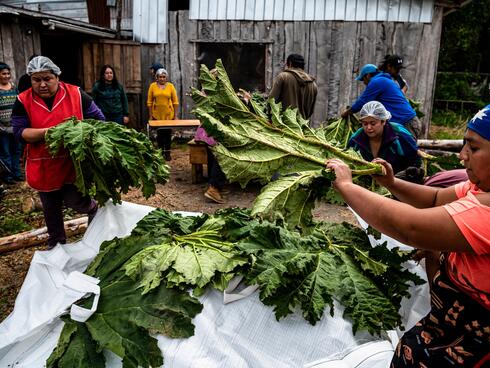
Huilliche families prepare a curanto, one of the oldest continually-practiced food traditions in the Americas. © Meridith Kohut / WWF-US
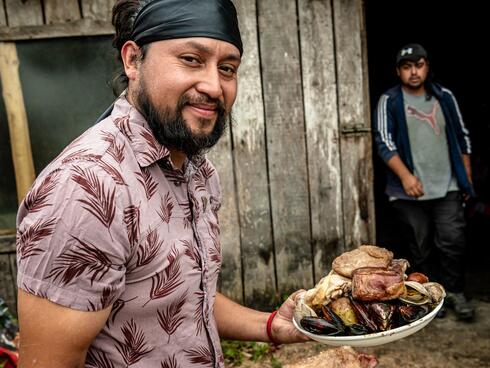
The dish includes meats, potatoes, and shellfish, all cooked in the earth with the help of heated stones and giant rhubarbs. © Meridith Kohut / WWF-US
Kattia Colivoro, the head chef at today’s curanto, says gatherings like this one in Yaldad are important to both preserve the Huilliche culture and honor the legacy of island ancestors. “Formerly, when there was no electricity or refrigerators, our ancestors made curantos with large amounts of shellfish so that they could conserve food for the winter months,” she explains. “Now, it’s more of a celebration among families. But it’s always done as a community because it’s a lot of work.”
Potatoes are a key player in a curanto. They are, after all, served in three different ways. “The reality is that we cook potatoes every day of our lives,” says Colivoro, noting that they’re used for stews, roasts, pancakes, porridge and even desserts. Chiloé is home to 286 native varieties, and DNA studies show that 99 percent of potatoes cultivated worldwide descend from those found here.
What hasn’t historically been found on Chiloé is chicken or pork; they didn’t feature in the original curantos, which would have been comprised almost entirely of marine life. At a 6,000-year-old cooking pit unearthed at the Puente Quilo archeological site, in northern Chiloé, archeologists found instead the skeletal remains of sea lions, marine otters and whales.
Components have always varied over the years from one pit to another as there’s no one recipe for a curanto, which is more of a style of cooking than a prescribed dish. Yet, all curantos throughout the millennia have been rooted in one common ingredient: freshly harvested shellfish. Colivoro explains that the juices they release in the cooking process, as shells open up, hit the hot rocks and help to steam the surrounding food.
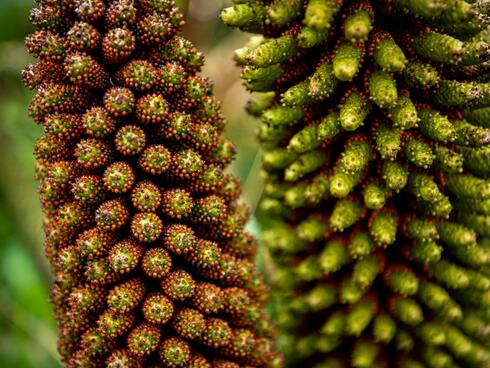
The Chilean rhubarb plant is native to southern Chile and its leaves play a major role in the preparation of curanto. © Meridith Kohut / WWF-US
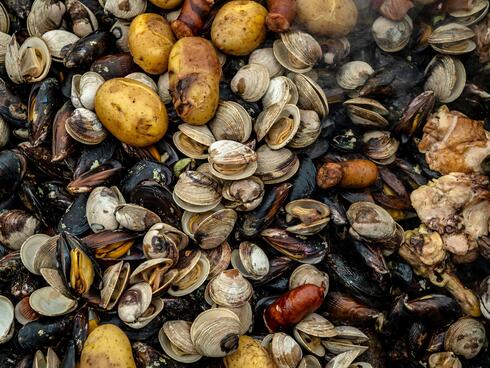
Clams and other shellfish are a traditional main ingredient. © Meridith Kohut / WWF-US
WWF works with an association of 10 Indigenous communities from Quellon city at Chiloé island, so they can sustainably manage the seas on which they depend and supports other effective area-based conservation measures (or OECMs) for the protection of marine biodiversity beyond traditional government-controlled waters.
“Everybody here lives from the sea,” says Colivoro, who’s collected clams and mussels since she was a young girl. “It means everything to us because it gives us what we need.” The hope is that, for millennia more, the shores of Chiloé will maintain a bountiful larder of shellfish. That way, the next generations can harvest what they need to continue the curanto tradition.
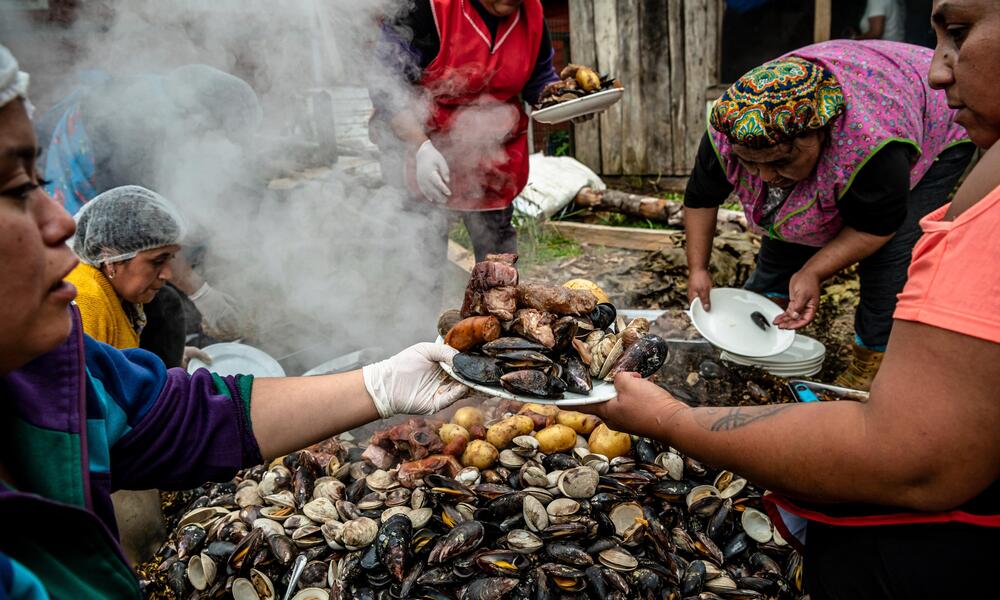
The Huilliche hope to serve as a model for other Indigenous groups defending both cultural and natural heritage. © Meridith Kohut / WWF-US
AUTHOR
Mark Johanson
SOURCE
Originally published on worldwildlife.org
PHOTO
© Meridith Kohut / WWF-US